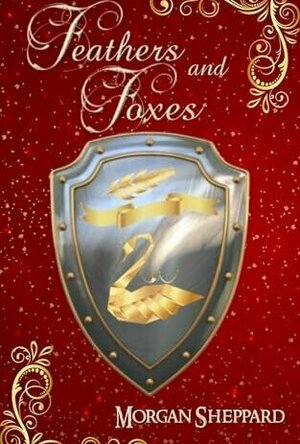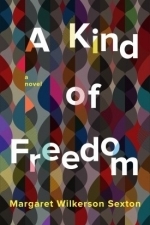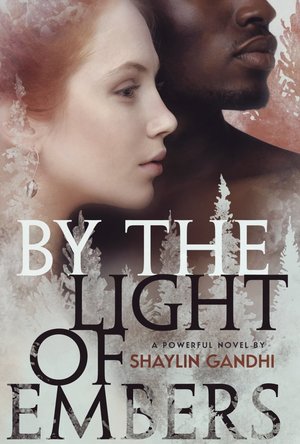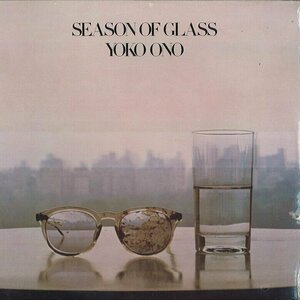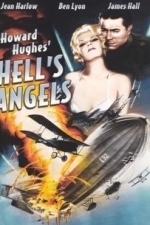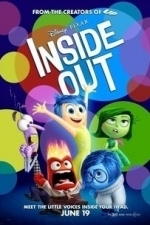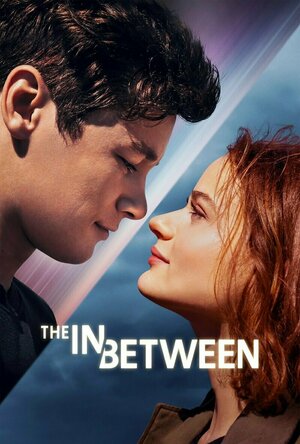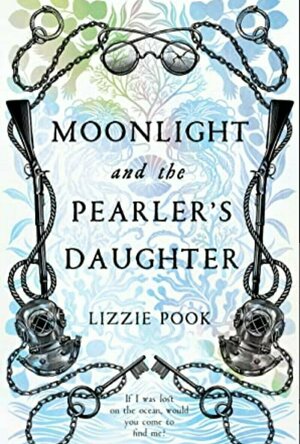Search
Search results
Debbiereadsbook (1449 KP) rated Feathers and Foxes (Brodyr Alarch #2) in Books
Aug 17, 2024
I love hearing from everyone! It fills the bigger picture with more colour and detai!
Independent reviewer for Archaeolibrarian, I was gifted my copy of this book.
This is book 2 in the Brodyr Alarch series, but it's not necessary to have read Slippers and Songs, which is book one, nor is it necessary to read Sealed with a Curse, which is the sort of introduction to this world and to the princes who are Brodyr Alarch. Not necessary, but I think you should. It will give you a better view of what the princes did to warrant getting the curse that turned them into swans, and how they got out of their predicament. They are very good books, I gave them Sealed 4 stars and 5 stars to Slippers and Songs.
And 5 stars for this one too!
Two things I'm loving the most about these books.
I don't know the Brothers Grimm tales that Sheppard is using to form the basis of these books. They are the lesser known ones, and I'm almost intrigued enough to go and read The Brothers Grimm tales, just to see if I can match them up! Almost, but I won't. Cos it might spoil my enjoyment of these books.
They are CLEAN. Totally and utterly and so beautifully clean. I will, more often than not, say I like my books on the steamier side and I make no apologies for that, but I am LOVING that these books are not at all like that! Oh don't get me wrong, there is love and passion here, but there is no explicit steam. Not for Terrwyn and Sulien, nor for Selene and Conway (from Sealed) as we catch up with them a couple times in the book.
In my review for Slippers, I said I wanted to hear from Tesni, but we didn't. But here, we get Sulien! And a few others too. I love hearing from everyone! It fills the bigger picture with more colour and detail, and I loved that.
Again, the Welsh Gods play a part, and again, I'm not going to try to name them cos I can't say them, let alone spell them, but they get up to their tricks in helping the Brodyr Alarch find their love, even if things do go a little off plan here!
Macsen is up next, given the little epilogue that those aforementioned Goods have, and I can't wait to get my hands on it! But Gerallt's book is the one I'm waiting for, and I strongly suspect his will be the last one! Gerallt is the prince who kept a swan wing, to remind himself of what he did. I want in his head so bad!
Anyway, enough rambling, but in case I forgot to say:
I loved this book!
5 full and shiny stars!
*same worded review will appear elsewhere
This is book 2 in the Brodyr Alarch series, but it's not necessary to have read Slippers and Songs, which is book one, nor is it necessary to read Sealed with a Curse, which is the sort of introduction to this world and to the princes who are Brodyr Alarch. Not necessary, but I think you should. It will give you a better view of what the princes did to warrant getting the curse that turned them into swans, and how they got out of their predicament. They are very good books, I gave them Sealed 4 stars and 5 stars to Slippers and Songs.
And 5 stars for this one too!
Two things I'm loving the most about these books.
I don't know the Brothers Grimm tales that Sheppard is using to form the basis of these books. They are the lesser known ones, and I'm almost intrigued enough to go and read The Brothers Grimm tales, just to see if I can match them up! Almost, but I won't. Cos it might spoil my enjoyment of these books.
They are CLEAN. Totally and utterly and so beautifully clean. I will, more often than not, say I like my books on the steamier side and I make no apologies for that, but I am LOVING that these books are not at all like that! Oh don't get me wrong, there is love and passion here, but there is no explicit steam. Not for Terrwyn and Sulien, nor for Selene and Conway (from Sealed) as we catch up with them a couple times in the book.
In my review for Slippers, I said I wanted to hear from Tesni, but we didn't. But here, we get Sulien! And a few others too. I love hearing from everyone! It fills the bigger picture with more colour and detail, and I loved that.
Again, the Welsh Gods play a part, and again, I'm not going to try to name them cos I can't say them, let alone spell them, but they get up to their tricks in helping the Brodyr Alarch find their love, even if things do go a little off plan here!
Macsen is up next, given the little epilogue that those aforementioned Goods have, and I can't wait to get my hands on it! But Gerallt's book is the one I'm waiting for, and I strongly suspect his will be the last one! Gerallt is the prince who kept a swan wing, to remind himself of what he did. I want in his head so bad!
Anyway, enough rambling, but in case I forgot to say:
I loved this book!
5 full and shiny stars!
*same worded review will appear elsewhere
Suswatibasu (1703 KP) rated A Kind of Freedom: A Novel in Books
Nov 6, 2017 (Updated Nov 6, 2017)
A book rooted in hope and endurance
Margaret Wilkerson Sexton's beautiful debut novel explores four generations of a family, from the time of segregation to mass incarceration.
In A Kind of Freedom, Sexton pursues a family’s history in a downward spiral, with three alternating plot lines that echo one another along the way. It begins with the budding love of Evelyn, brought up in New Orleans and the daughter of a Creole mother and black doctor father. She is courted by Renard, a poor man who works menial jobs to get by but aspires to study medicine. Their courtship reveals the strictures of a class- and colour-driven society that suffocates ambition and distorts desire.
The second generation is about Jackie, a single mother in 1980s New Orleans who is in love with her child’s father but afraid he will succumb to his crack addiction.
Eventually, we get to know Jackie’s son, T.C., in 2010, a young man at a turning point in his life. Through T.C.'s eyes, Sexton portrays a post-Katrina New Orleans where the smell of mold still lingers and opportunities for fast cash in the streets abound, as do the chances of getting shot or arrested.
It's an unflinching portrayal, slightly detached and not overbearing in its rhetoric. It shows where links have been bruised and sometimes broken, but dwells on the endurance and not the damage. A moving read.
In A Kind of Freedom, Sexton pursues a family’s history in a downward spiral, with three alternating plot lines that echo one another along the way. It begins with the budding love of Evelyn, brought up in New Orleans and the daughter of a Creole mother and black doctor father. She is courted by Renard, a poor man who works menial jobs to get by but aspires to study medicine. Their courtship reveals the strictures of a class- and colour-driven society that suffocates ambition and distorts desire.
The second generation is about Jackie, a single mother in 1980s New Orleans who is in love with her child’s father but afraid he will succumb to his crack addiction.
Eventually, we get to know Jackie’s son, T.C., in 2010, a young man at a turning point in his life. Through T.C.'s eyes, Sexton portrays a post-Katrina New Orleans where the smell of mold still lingers and opportunities for fast cash in the streets abound, as do the chances of getting shot or arrested.
It's an unflinching portrayal, slightly detached and not overbearing in its rhetoric. It shows where links have been bruised and sometimes broken, but dwells on the endurance and not the damage. A moving read.
Merissa (12929 KP) rated By the Light of Embers in Books
May 14, 2019
By the Light of Embers by Shaylin Gandhi
By the Light of the Embers is a story that enveloped me in a world unknown. Taking me back to 1954 in Louisiana, I found a world where women were expected to be housewives, and people of colour were seen as second-class citizens.
This was an amazing story that gripped me from the very beginning, with descriptions in such perfect detail, you have no trouble seeing what the author saw. Although this book details some harsh realities, there are moments of gentleness, which made it all the more poignant. Once Lucia went to Louisiana, it became obvious that there was a connection between Sebastian and herself. At the same time, it was also obvious that Nicholas and Lucia wouldn't have the happy ending I was hoping for. Although I was sad at their ending, I also found it absolutely perfect, and am glad the author did it that way. It allows me to smile and imagine their HAE for myself.
Exceedingly well written, with no editing or grammatical errors that disrupted me, I thought this book was amazing. The characters change throughout the story, as their experiences change them, and yet each remain true to their core. A stunning book that I highly recommend.
* A copy of this book was provided to me with no requirements for a review. I voluntarily read this book, and the comments here are my honest opinion. *
Merissa
Archaeolibrarian - I Dig Good Books!
This was an amazing story that gripped me from the very beginning, with descriptions in such perfect detail, you have no trouble seeing what the author saw. Although this book details some harsh realities, there are moments of gentleness, which made it all the more poignant. Once Lucia went to Louisiana, it became obvious that there was a connection between Sebastian and herself. At the same time, it was also obvious that Nicholas and Lucia wouldn't have the happy ending I was hoping for. Although I was sad at their ending, I also found it absolutely perfect, and am glad the author did it that way. It allows me to smile and imagine their HAE for myself.
Exceedingly well written, with no editing or grammatical errors that disrupted me, I thought this book was amazing. The characters change throughout the story, as their experiences change them, and yet each remain true to their core. A stunning book that I highly recommend.
* A copy of this book was provided to me with no requirements for a review. I voluntarily read this book, and the comments here are my honest opinion. *
Merissa
Archaeolibrarian - I Dig Good Books!
Nicole Hadley (380 KP) rated Engineered!: Engineering Design at Work in Books
Jun 18, 2018
Engineered! by Shannon Hunt is a great children’s non-fiction book. The book is clear, informative, nicely illustrated, detailed, and logically structured. From the Mars Rover to 3D printing to helping a herd of caribou and more, Engineered! dives into nine stories of modern engineering. Kids will learn about the engineering design process from defining the problem to sharing your solution with the world.
Each story highlights the key components of the design process, taking kids on the journey through different types of engineering (aerospace, biomedical, chemical, mechanical, electrical, civil, geomatics, computer, and environmental) from seeing a problem to creating effective solutions to implementing their ideas. Coupled with great illustrations, Engineered! is sure to be a favorite of any budding engineer!
There is a lot of information crammed onto each page (some pages easier to read than others, due to text size, background colour, and minimal spacing between lines of text). However, this is also works to an advantage, as there's a lot to take in on each page, with full pages of busy geometric-style illustrations. Each time you look at the images you'll be sure to find something different!
There is a helpful glossary at the end, which is useful to look back on if necessary, as there certainly is a lot of information to take in.
I received this ARC from Kids Can Press via NetGalley in exchange for an honest review.
Each story highlights the key components of the design process, taking kids on the journey through different types of engineering (aerospace, biomedical, chemical, mechanical, electrical, civil, geomatics, computer, and environmental) from seeing a problem to creating effective solutions to implementing their ideas. Coupled with great illustrations, Engineered! is sure to be a favorite of any budding engineer!
There is a lot of information crammed onto each page (some pages easier to read than others, due to text size, background colour, and minimal spacing between lines of text). However, this is also works to an advantage, as there's a lot to take in on each page, with full pages of busy geometric-style illustrations. Each time you look at the images you'll be sure to find something different!
There is a helpful glossary at the end, which is useful to look back on if necessary, as there certainly is a lot of information to take in.
I received this ARC from Kids Can Press via NetGalley in exchange for an honest review.
Kevin Morby recommended track Goodbye Sadness by Yoko Ono in Season of Glass by Yoko Ono in Music (curated)
RəX Regent (349 KP) rated Hell's Angels (1930) in Movies
Feb 19, 2019
Big budget, elaborate air combat scenes which resulted in several deaths and Gimmick after gimmick… This has to be the Howard Hughes’ World War 1 epic, Hell’s Angels.
Where to begin?
Well, we follow the Routledge two brothers as they join the war effort and the Royal Air Corps. in 1914 and whilst one is a somewhat cowardly womaniser, his brother is the noble heroic type who spends the film being screwed over bey everyone in one way or another, but most notably by his girlfriend, Jean Harlow, who is so annoyingly wrong for him that it is a relief when he has heart is broken by her in the third act.
But like mots aspects of this plot, this is as messy and disjointed as everything else. We are given a story line to follow for two hours, as Hughes indulges his legendary love of flying to create some of the best dog fight sequences ever committed to film. They are real, epic and effective in conveying the thrilling danger of these world war one battles.
But this is a film of gimmick. Pushing the pre-code envelope with sex and bad language, this was originally conceived as a silent movie and was re-written and re-shot to become the sound movie whcih we have to today and there in clearly lies the problem. What we end up is a movie cobbled together, with silence sequences being converted to sound, the poor acting from its star James Hall as the idealistic Roy Routledge, Jean Harlow, replacing the original silent star Gretta Nissen for this sound version, excelling in her role as his trampy girlfriend and Ben Lyon as the weaker brother, Monte, but the real star of this show are the special effects.
But of the human stars, Harlow, presented here in the only colour footage known to exist of the tragic star, who would die at the young age of 26 just seven years later, probably delivers one of the best performances in the whole picture, certainly outshining her male co-stars.
Of the special effects though, the use of 2-tone Technicolor, which was actually shot with the Metrocolor system but processed by Technicolor, in one sequence as the group are all together at a party, as well as the classical use of tints during some other scenes, add a vibrancy to the project. But this also can have a jarring effect, especially as we leave the colour scenes and wrap up thet sequences in black and white.
But the model effects, notably the munition raid at the end and the Zeppelin bombing London scenes are spectacular, especially for the time. The other notable gimmick which has yet to be transferred to the small screen, was the original use of what was called Magnascope back in 1930.
This was obviously only used at high end theaters but this paved the way for what IMAX are doing now, by blowing up the aerial scenes into a larger screen format from the 1.20:1 ratio which the the rest of film was presented. But when you add all this up you have got a mess!
Magnascope, technicolor scenes, tinted scenes, daring aerial battles, a half arsed love story and an image of world war which was a kin to that of Michael Bay’s Pearl Harbor’s (2001) view of World War 2! But this is what this is. An early, lavish popcorn blockbuster, with little to offer but cinematic thrills, which it succeeds at without any doubt.
The action is great, the plot is mediocre to say the least but as film, it does offer a brief insight into how cinema audiences saw the Great War back in 1930 and you can not help but think that this audience was only nine years away from the next one as we watch this.
pictureBut the ending was grim, with noble ends rounding off a story of brotherly love and love of duty and country, seems overblown considering what we had had to sit through but still, by the end, is anybody really routing for the Routledge brothers to have a happy ending?
I certainly was not. But this ending is the nearest thing that this film has to a story arc, as is pays off the opening act where Roy risks his life fighting a duel for his cowardly brother against the very German officer who is about to have them executed.
Duty wins out and Monte sees the light at the end after a very melodramatic death scene.
But having said all that, this film is worth it for the action alone and for film buffs, the only colour footage of Jean Harlow.
Where to begin?
Well, we follow the Routledge two brothers as they join the war effort and the Royal Air Corps. in 1914 and whilst one is a somewhat cowardly womaniser, his brother is the noble heroic type who spends the film being screwed over bey everyone in one way or another, but most notably by his girlfriend, Jean Harlow, who is so annoyingly wrong for him that it is a relief when he has heart is broken by her in the third act.
But like mots aspects of this plot, this is as messy and disjointed as everything else. We are given a story line to follow for two hours, as Hughes indulges his legendary love of flying to create some of the best dog fight sequences ever committed to film. They are real, epic and effective in conveying the thrilling danger of these world war one battles.
But this is a film of gimmick. Pushing the pre-code envelope with sex and bad language, this was originally conceived as a silent movie and was re-written and re-shot to become the sound movie whcih we have to today and there in clearly lies the problem. What we end up is a movie cobbled together, with silence sequences being converted to sound, the poor acting from its star James Hall as the idealistic Roy Routledge, Jean Harlow, replacing the original silent star Gretta Nissen for this sound version, excelling in her role as his trampy girlfriend and Ben Lyon as the weaker brother, Monte, but the real star of this show are the special effects.
But of the human stars, Harlow, presented here in the only colour footage known to exist of the tragic star, who would die at the young age of 26 just seven years later, probably delivers one of the best performances in the whole picture, certainly outshining her male co-stars.
Of the special effects though, the use of 2-tone Technicolor, which was actually shot with the Metrocolor system but processed by Technicolor, in one sequence as the group are all together at a party, as well as the classical use of tints during some other scenes, add a vibrancy to the project. But this also can have a jarring effect, especially as we leave the colour scenes and wrap up thet sequences in black and white.
But the model effects, notably the munition raid at the end and the Zeppelin bombing London scenes are spectacular, especially for the time. The other notable gimmick which has yet to be transferred to the small screen, was the original use of what was called Magnascope back in 1930.
This was obviously only used at high end theaters but this paved the way for what IMAX are doing now, by blowing up the aerial scenes into a larger screen format from the 1.20:1 ratio which the the rest of film was presented. But when you add all this up you have got a mess!
Magnascope, technicolor scenes, tinted scenes, daring aerial battles, a half arsed love story and an image of world war which was a kin to that of Michael Bay’s Pearl Harbor’s (2001) view of World War 2! But this is what this is. An early, lavish popcorn blockbuster, with little to offer but cinematic thrills, which it succeeds at without any doubt.
The action is great, the plot is mediocre to say the least but as film, it does offer a brief insight into how cinema audiences saw the Great War back in 1930 and you can not help but think that this audience was only nine years away from the next one as we watch this.
pictureBut the ending was grim, with noble ends rounding off a story of brotherly love and love of duty and country, seems overblown considering what we had had to sit through but still, by the end, is anybody really routing for the Routledge brothers to have a happy ending?
I certainly was not. But this ending is the nearest thing that this film has to a story arc, as is pays off the opening act where Roy risks his life fighting a duel for his cowardly brother against the very German officer who is about to have them executed.
Duty wins out and Monte sees the light at the end after a very melodramatic death scene.
But having said all that, this film is worth it for the action alone and for film buffs, the only colour footage of Jean Harlow.
Nicole Hadley (380 KP) rated Carlos the Chameleon: A Story to Help Empower Children to Be Themselves in Books
Jun 14, 2018
Children being children
Contains spoilers, click to show
Carlos the Chameleon A Story to Help Empower Children to Be Themselves by Alice Reeves is part of the Truth and Tales series whose goal is to eradicate prejudices and encourage acceptance of others. Carlos is a beautiful emerald green chameleon and can magically turn different colours depending on his surroundings and who he is with. He has a variety of friends which constantly challenges his transformations. When he is with them he turns exactly the same colour to blend into their group.
Carlos is very insecure about himself and his self-worth is very low. He's afraid if he is not like his peers they will reject him and not be his friend any more. He turns hot pink when he's with the flamingos, bright blue with his frog buddies, and orange with black spots when it's playtime with the jaguar pack. He yearns so much to fit in and be just like them. He thinks being the same is key to making their friendships work.
One day the animals discover his real color, which is a lovely emerald green. Since they are his true friends they assure him that he is gorgeous. Carlos is relieved to learn that it's not about his outward appearance at all, but about his loving warm heart inside of him.
This book has extra notes and resources for teachers and parents to utilize. This is a very important message that will teach kids that they are unique and can celebrate exactly who they were created to be.
Carlos is very insecure about himself and his self-worth is very low. He's afraid if he is not like his peers they will reject him and not be his friend any more. He turns hot pink when he's with the flamingos, bright blue with his frog buddies, and orange with black spots when it's playtime with the jaguar pack. He yearns so much to fit in and be just like them. He thinks being the same is key to making their friendships work.
One day the animals discover his real color, which is a lovely emerald green. Since they are his true friends they assure him that he is gorgeous. Carlos is relieved to learn that it's not about his outward appearance at all, but about his loving warm heart inside of him.
This book has extra notes and resources for teachers and parents to utilize. This is a very important message that will teach kids that they are unique and can celebrate exactly who they were created to be.
LeftSideCut (3776 KP) rated Inside Out (2015) in Movies
Sep 25, 2020
Standard Pixar affair - easy to look at, appealing to a younger audience whilst simultaneously bludgeoning adults with relatable emotional moments that make you want to curl up in a corner somewhere and weep.
Inside Out ticks all these boxes without a shadow of a doubt.
The animation is wonderful as usual and is arguably Pixar's most colourful film to date. The concept of emotions can be complex at the best of times. It's a concept that most people will struggle with for their whole lives and is something that will truly never be understood. Inside Out tackles this with aplomb, using colour coding to make it accessible to kids, and exploring just how complicated feelings can become especially as puberty begins to hit. It's very clever in its execution as well.
The majority of the story takes place in Riley's head, as her emotions Joy, Sadness, Fear, Anger, and Disgust all struggle to keep everything balanced as she starts to hit roadblocks in her life. One thing leads to another before Joy and Sadness are ejected out of the "control centre" and desperately try to find their way back, leaving the other emotions to handle the pains of growing up.
It's one part emotional family drama, and one part bonkers sci-fi adventure, and it works really well with the help of a great voice cast.
Inside Out doesn't quite hit the lofty heights of the best Pixar efforts for me, but it's still damn good and surely will appeal to everyone in some way, no matter what age your are.
Inside Out ticks all these boxes without a shadow of a doubt.
The animation is wonderful as usual and is arguably Pixar's most colourful film to date. The concept of emotions can be complex at the best of times. It's a concept that most people will struggle with for their whole lives and is something that will truly never be understood. Inside Out tackles this with aplomb, using colour coding to make it accessible to kids, and exploring just how complicated feelings can become especially as puberty begins to hit. It's very clever in its execution as well.
The majority of the story takes place in Riley's head, as her emotions Joy, Sadness, Fear, Anger, and Disgust all struggle to keep everything balanced as she starts to hit roadblocks in her life. One thing leads to another before Joy and Sadness are ejected out of the "control centre" and desperately try to find their way back, leaving the other emotions to handle the pains of growing up.
It's one part emotional family drama, and one part bonkers sci-fi adventure, and it works really well with the help of a great voice cast.
Inside Out doesn't quite hit the lofty heights of the best Pixar efforts for me, but it's still damn good and surely will appeal to everyone in some way, no matter what age your are.
Kim Pook (101 KP) rated The inbetween (2022) in Movies
Jun 3, 2022
The movie starts with the aftermath of an accident. A young boy and girl are lying on the ground and the girl wakes up in hospital, it then rewinds to show us what happened prior to the accident (182 days).
Its clear from a conversation that the girl is adopted but won't connect with her adoptive parents, instead she spends time with her camera by herself. During a trip to the cinema she meets a young lad who offers to translate the movie for her and they hit it off straight away.
It then goes back to the hospital where we find out that skye (the boy) and tessa had become a couple, and skye had died and become stuck in the Inbetween (hence the movies title) trying to contact tessa.
There's a lot of back and forth between the time lines as skye and tessas relationship develops. I like that they used the difference in colour to show which timeline we were watching, the memory is bright and cheerful, whereas the present has more of a grey ish tint to it. I thought the performances were very good, though I did feel the length was a bit too long. Everything could have been wrapped up in an hour and a half rather than 2 hours. As for the storyline itself, I love a good romance movie so I can't complain, though I do feel the movie would have better if it wasn't back and forth all the time.
Its clear from a conversation that the girl is adopted but won't connect with her adoptive parents, instead she spends time with her camera by herself. During a trip to the cinema she meets a young lad who offers to translate the movie for her and they hit it off straight away.
It then goes back to the hospital where we find out that skye (the boy) and tessa had become a couple, and skye had died and become stuck in the Inbetween (hence the movies title) trying to contact tessa.
There's a lot of back and forth between the time lines as skye and tessas relationship develops. I like that they used the difference in colour to show which timeline we were watching, the memory is bright and cheerful, whereas the present has more of a grey ish tint to it. I thought the performances were very good, though I did feel the length was a bit too long. Everything could have been wrapped up in an hour and a half rather than 2 hours. As for the storyline itself, I love a good romance movie so I can't complain, though I do feel the movie would have better if it wasn't back and forth all the time.
ClareR (5885 KP) rated Moonlight and the Pearler’s Daughter in Books
Jul 19, 2022
Moonlight and the Pearler’s daughter ticked a lot of the boxes on my ‘favourite books’ list:
Historical fiction ✅
Set somewhere completely out of my previous knowledge ✅
A strong female character, operating in a difficult situation ✅
A bit of a mystery ✅ (I don’t really want to try and solve it, I just like the big reveal!)
As is often the case, the expectation of women in historical fiction is to stay at home, look after the house, wait to get married and have babies. But Eliza won’t stay at home when her father goes missing - she doesn’t assume he’s dead like the rest of the townsfolk.
There’s a real feeling of danger in a town where there appears to be no law keepers - not honest one’s, anyway. And if the corrupt, prejudiced townsfolk don’t get you, the climate and the wildlife (jellyfish, crocodiles!!) will.
This is a gripping, descriptive novel, that puts the reader firmly in Eliza’s world. I certainly had more of an idea of the hardships of living in NW Australia at this time. What will stay with me however, is Eliza’s determination to save her father and her family. She’s single-minded in her quest to find him, and determined not to let anyone else take the blame for his supposed death. It’s unnerving at times, when the attitudes of the white settlers towards the Aboriginals and other people of colour are starkly described.
A dark time in history, indeed.
And I’d highly recommend this. It’s wonderfully told.
Historical fiction ✅
Set somewhere completely out of my previous knowledge ✅
A strong female character, operating in a difficult situation ✅
A bit of a mystery ✅ (I don’t really want to try and solve it, I just like the big reveal!)
As is often the case, the expectation of women in historical fiction is to stay at home, look after the house, wait to get married and have babies. But Eliza won’t stay at home when her father goes missing - she doesn’t assume he’s dead like the rest of the townsfolk.
There’s a real feeling of danger in a town where there appears to be no law keepers - not honest one’s, anyway. And if the corrupt, prejudiced townsfolk don’t get you, the climate and the wildlife (jellyfish, crocodiles!!) will.
This is a gripping, descriptive novel, that puts the reader firmly in Eliza’s world. I certainly had more of an idea of the hardships of living in NW Australia at this time. What will stay with me however, is Eliza’s determination to save her father and her family. She’s single-minded in her quest to find him, and determined not to let anyone else take the blame for his supposed death. It’s unnerving at times, when the attitudes of the white settlers towards the Aboriginals and other people of colour are starkly described.
A dark time in history, indeed.
And I’d highly recommend this. It’s wonderfully told.
